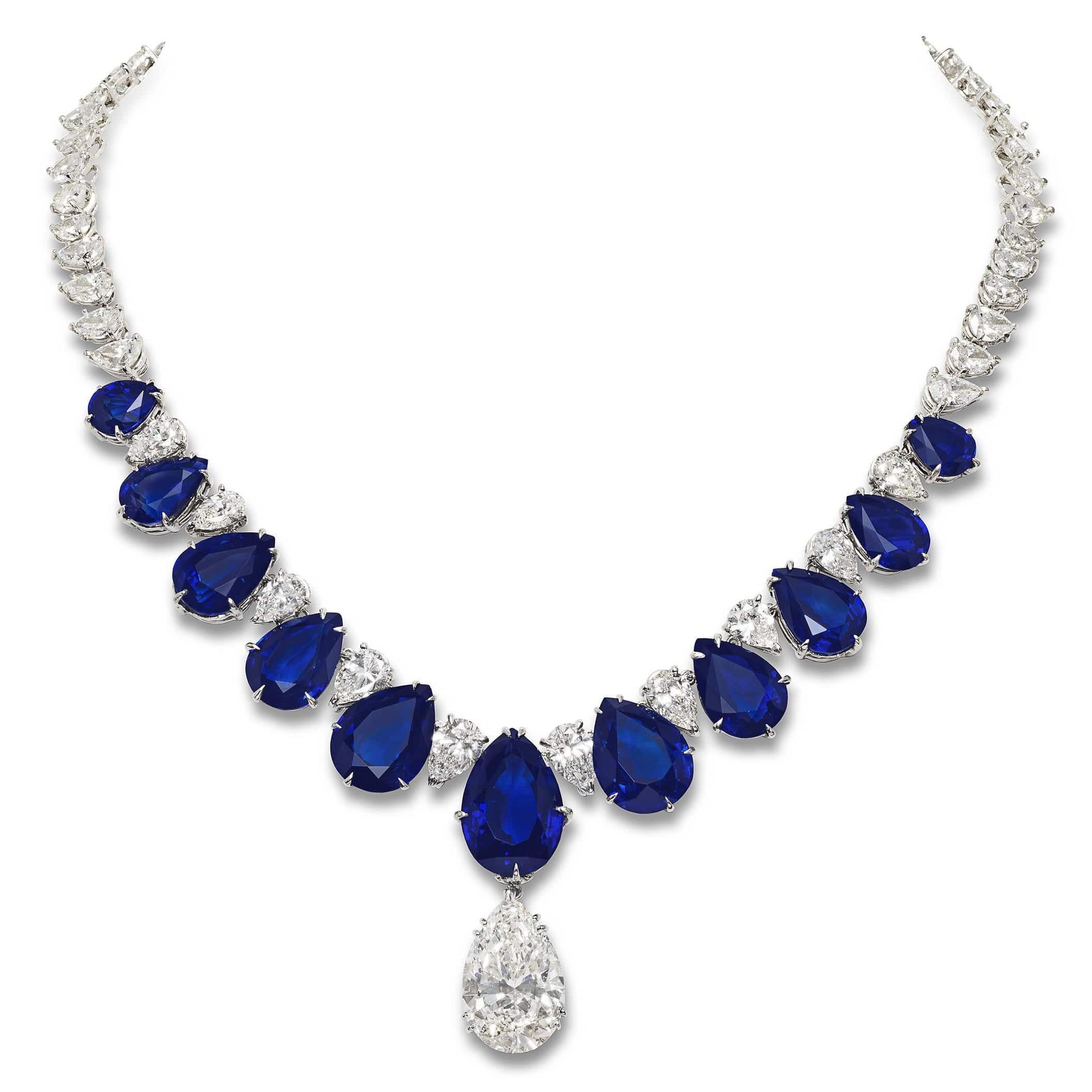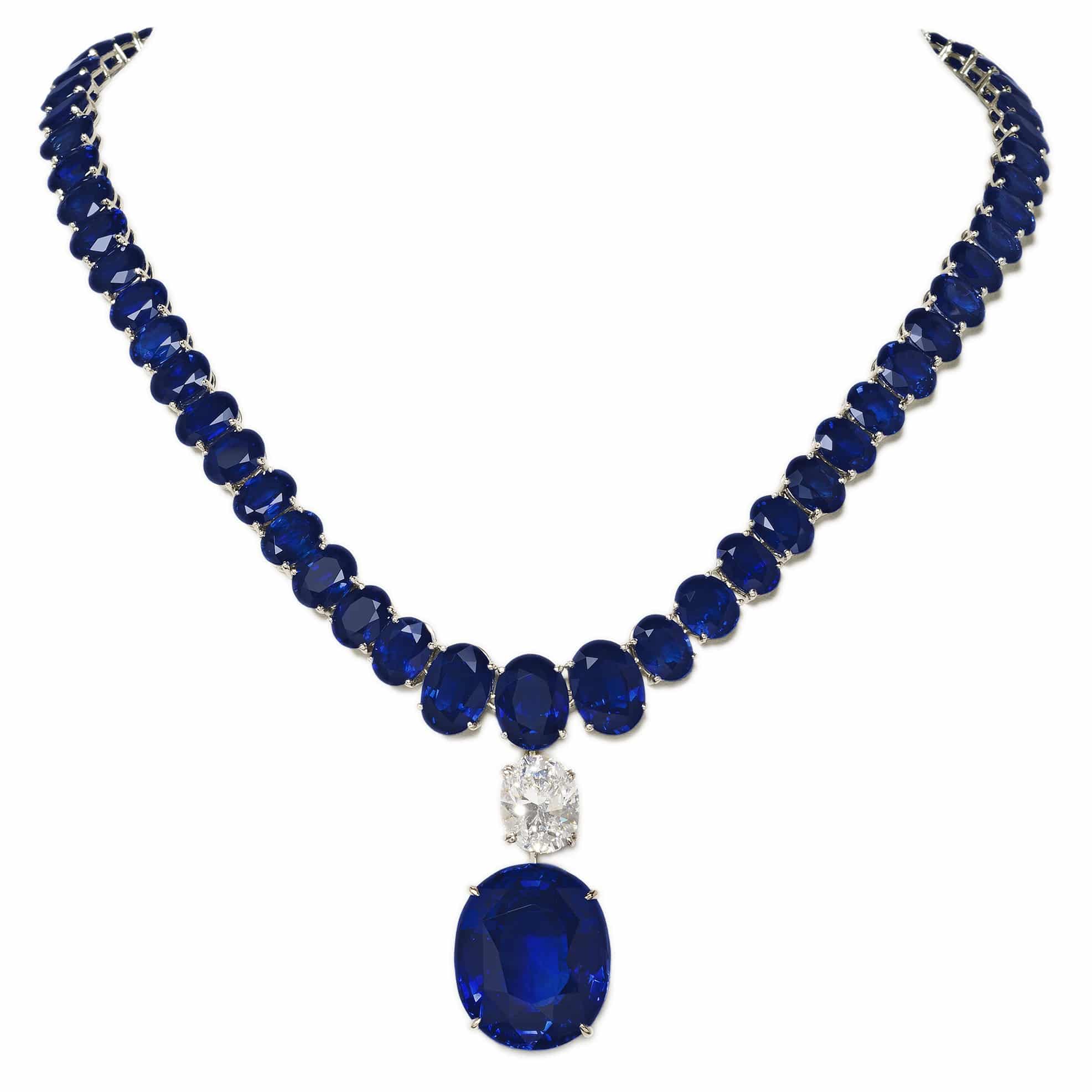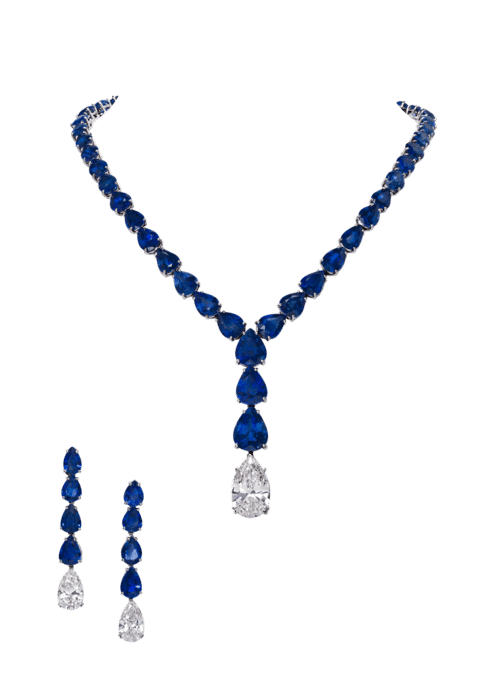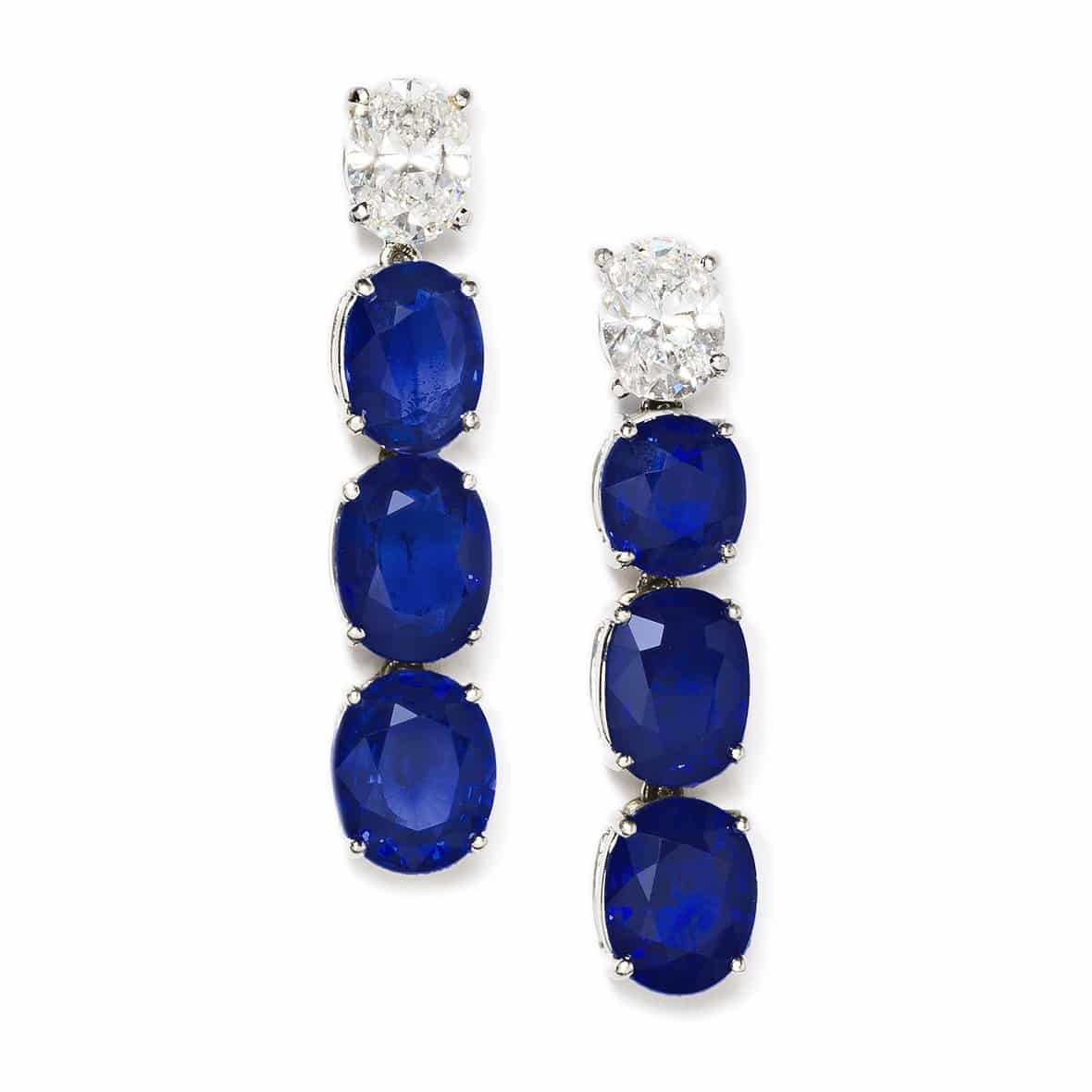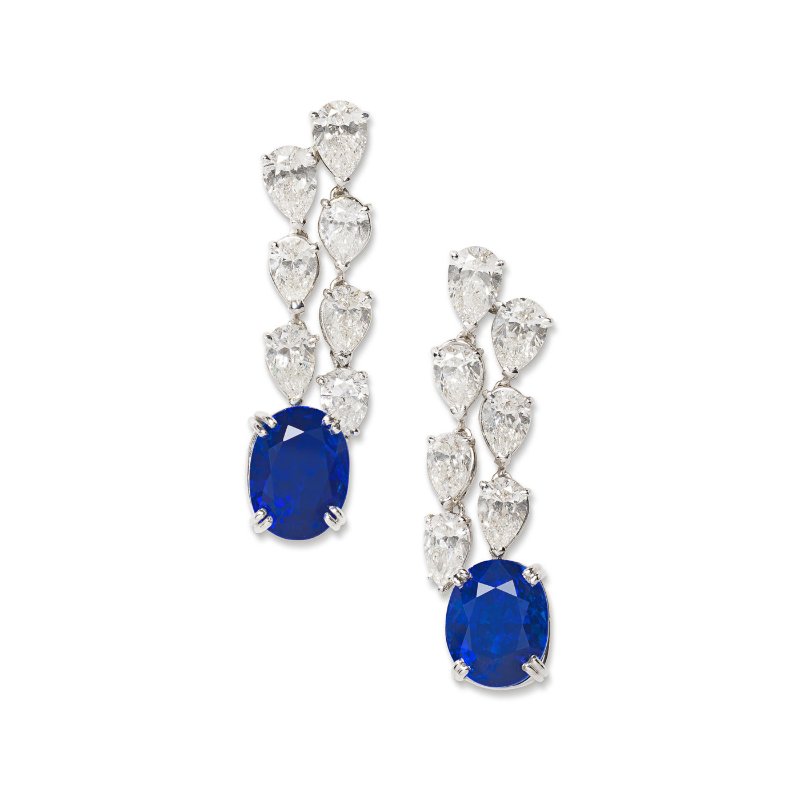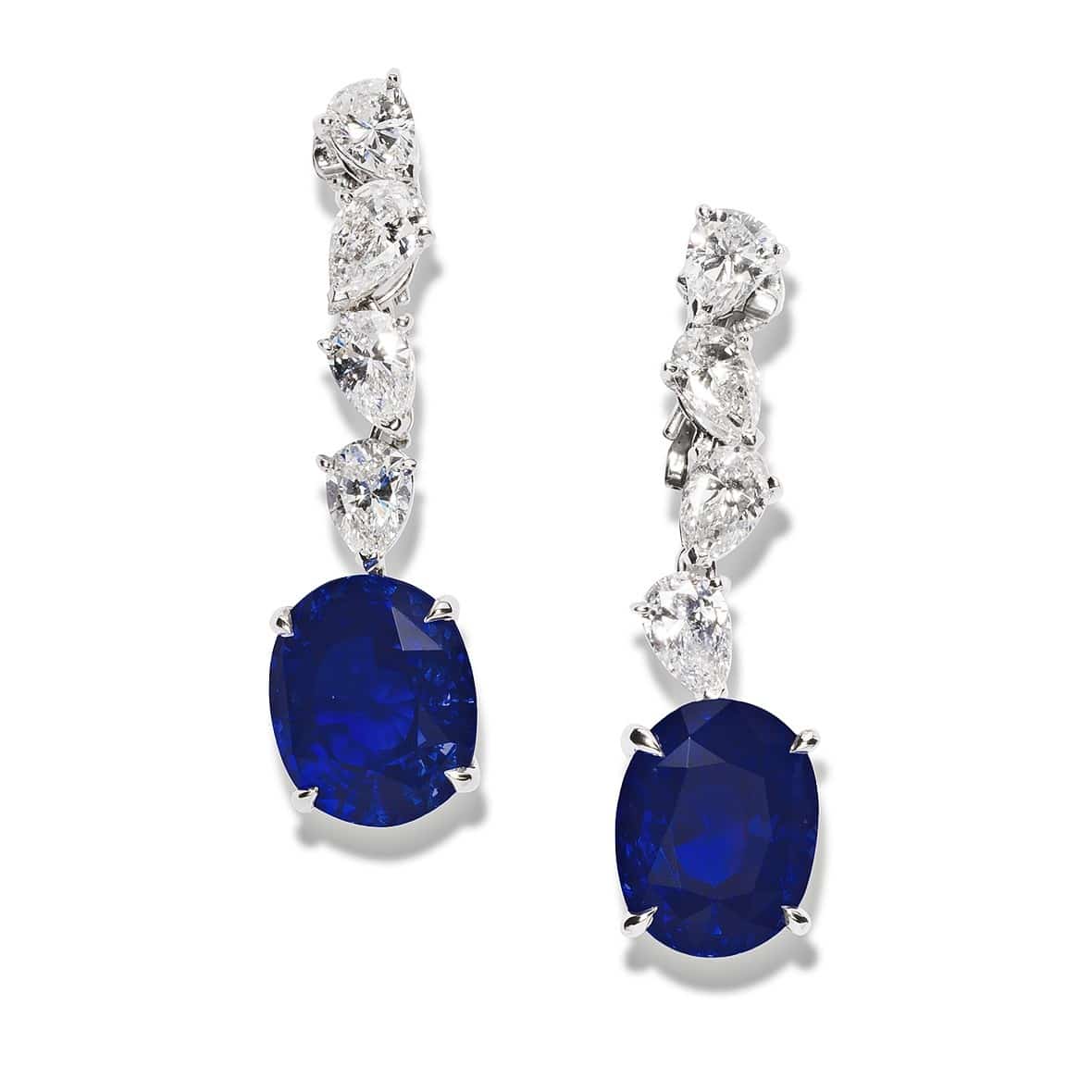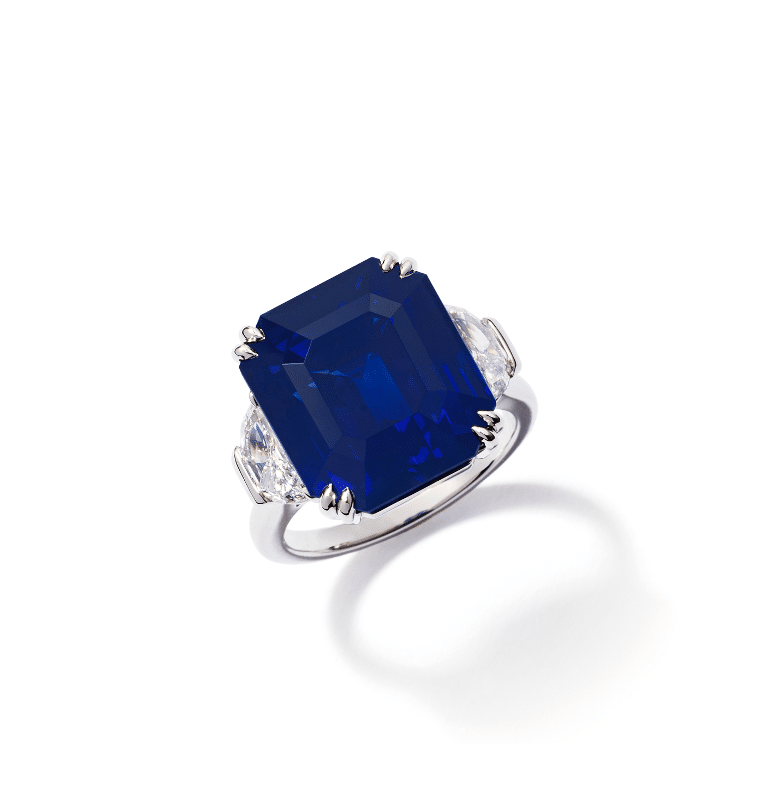Sapphire Jewels by Jahan Jewellery
Fine quality sapphires are one of the most valuable gemstones in the world alongside rubies, emeralds, and diamonds. Countless cultures through history revered the famous blue variety of the sapphire. Sapphires remain a beloved and renowned treasure to this day. They are an everlasting symbol of nobility, honesty, and loyalty.
Although sapphires exist in all colors of the spectrum, we are particularly attracted to the blue variety. We thrive on the opportunity to design jewels that showcase their graceful characteristics. For over seven generations, the everlasting purity of sapphires inspired our most magnificent creations.
We invite you to discover some of our extraordinary sapphire pieces by visiting the link below
From its historical origins as a mark of royalty and power, the blue sapphire became a contemporary symbol of romance. The word sapphire derives from the Latin “sapphirus,” which translates into blue. In earlier times, their vibrant blue colour inspired the belief that the celestial gemstone painted the sky. Their cerulean hues were also thought to mirror heaven’s colors.
Sapphire legends often begin with Greek mythology. For the early Greeks, they held the force of protection. The ancient Sinhalese believed sapphires contained the power of wisdom. Sapphires also play an important role in Egyptian and Persian history as a symbol of wisdom, wealth, and truth.
Their grip on the imagination transcended to the times of the powerful mythical emperors. One of their illustrious leaders, Shah Jahan, was said to have decorated the famous “peacock throne” with sapphires. This present to his wife was a symbol of his everlasting devotion. In more recent times, Princess Diana was fascinated with the gemstone. Her sapphire jewellery revived the blazing desire for the blue treasure.
Sapphire Symbolism
Today, the gem is associated with commitment and fidelity. Wearing a sapphire gifted by a loved one symbolizes an everlasting bond. As the September birthstone, sapphire jewels are popular birthday gifts. Sapphire jewels also make breathtaking anniversary gifts, typically to celebrate the 45th anniversary. Naturally, they are an excellent choice for bridal jewelry and an extraordinarily popular option for the centerpiece of an engagement ring.
How are Sapphires Formed?
Sapphires owe their unique appearance to the rare conditions that cause their formation. Smoldering volcanic form coarse igneous rocks that cool down over millions of years. All under a combination of high temperatures and tremendous pressure. This reaction creates a synthesis of minerals that crystallize into the legendary gemstone we now cherish.
Sapphires are a variety of the mineral corundum. Corundum scores a nine on the Moh’s hardness scale, second only to diamonds. The corundum stone is initially transparent and colorless. A sapphire takes on different colors when it comes into contact with various metals. This is why they are available in a variety of combinations of hues like pink, green, yellow, white, and black. The most valuable color of sapphire is blue, and the red variety is called ruby.
With blue sapphires, it is a combination of rare ingredients that make these beautiful gemstones a true wonder. It takes two additional minerals to give them their lustrous blue color: iron and titanium. These ingredients, combined with rare environmental factors, contribute to the scarcity and value of the mythical gemstone.
How Rare are Blue Sapphires?
From the illustrious padparadscha to the delightful yellow, sapphires exist in a variety of colors. We showcase all these wonderous hues in our creations. However, today, we will explore one of the rarest varieties; the exceptional blue sapphires.
The blue sapphire is extremely rare. Indeed, the supply of high-quality sapphires is not large enough to meet the demand. Only a few mines operate. The Kashmir mine was only active for five years before the supply of high-quality sapphires was depleted. Mining is severely limited in the Mogok valley and, Sri Lankan mines are quickly becoming exhausted.
Therefore, acquiring a gem-quality blue sapphire is becoming increasingly complicated. We invite you to contact us for more information on how to purchase a supreme quality sapphire.
Where do Sapphires come from?
High-quality sapphires come from many places including, Madagascar, Australia, Tanzania, and Thailand. The most famous origins are Kashmir, Sri Lanka, Myanmar (Burma). Indeed, high-quality sapphires from these origins command a significant premium relative to gem-quality sapphires mined elsewhere. Kashmir sapphires from the Zaskar mountains acquired legendary status due to their velvety, often cloudy appearance. Only a minuscule number of sapphires survived the perilous transportation down mighty rivers. These environmental factors resulted in a limited supply of this mythical rough material. Kashmir sapphires tend to command the most substantial premium. The historical Burmese Mogok valley and fertile Sri Lankan mines are also well known for producing sapphires of extraordinary quality. As such, sapphires of ‘Burmese’ and ‘Ceylon’ origin also command premium prices.
Sapphire Color
Sapphires come in a variety of shades and hues. A sapphire’s secondary hue must not account for more than 15% of its color for the gemstone categorized as a “blue” sapphire. Sapphires that have dominant secondary or tertiary hues that alter the color of the gemstone receive a different grade and are known as “fancy colored.”Supreme quality blue sapphires have an intense color with minimal color zoning. Their tone ranges from medium to medium-dark with a strong to vivid saturation. Their saturation should be strong but should not darken the color and compromise the gemstone’s brilliance. Aside from colour grades, other names emerged to describe blue sapphires in the trade. These include “cornflower blue” sapphires and “royal blue” sapphires. The term “cornflower” originates from the flower of the same name. The cornflower is one of the only flowers that are purely blue. Similarly, cornflower sapphires have a natural blue color with no secondary hues. In terms of tone and saturation, their color lies between a light pastel and a deeper royal blue shade. Royal blue sapphires have a vivid blue-violet color with intense saturation. The incredible clarity and superior luster of these gemstones command premium prices also command premium prices.
Sapphire Clarity
Clarity also plays an essential role in determining a sapphire’s value. Sapphires often have visible inclusions as a result of natural crystal growth. Among these inclusions are long thin mineral inclusions called needles. A small amount of inclusions is natural and should not, by itself, decrease the value of a sapphire. Clarity will only impact a sapphire’s value if the amount, nature, and prevalence of inclusions cause the sapphire to become too opaque and dull.
In some sapphires, inclusions are an asset. Fine needles called silk occur when the mineral “rutile” intersect in groups. When rutile daggers lance their way through the interior of a sapphire, a ‘silky’ effect forms. This effect scatters light in the gemstone and creates the coveted velvety appearance. Sapphires with this particular characteristic radiate with a delicate glow.
Inclusions may also result in ‘asterisms.’ Asterisms create a distinctive shape on the sapphire, reminiscent of a star. The star generally has six points that form a symmetrical network. This optical effect tends to be more visible under a beam of light. Sapphires with this mythical characteristic are extremely valuable and have inspired countless poems and legends throughout history.
Other clarity characteristics in the sapphire are the presence of included mineral crystals. These mysterious inclusions are the DNA of the stone. An experienced gemologist can usually infer a sapphires likely origin based on the type of inclusions as well as the true hue, tone and, saturation of the sapphire.
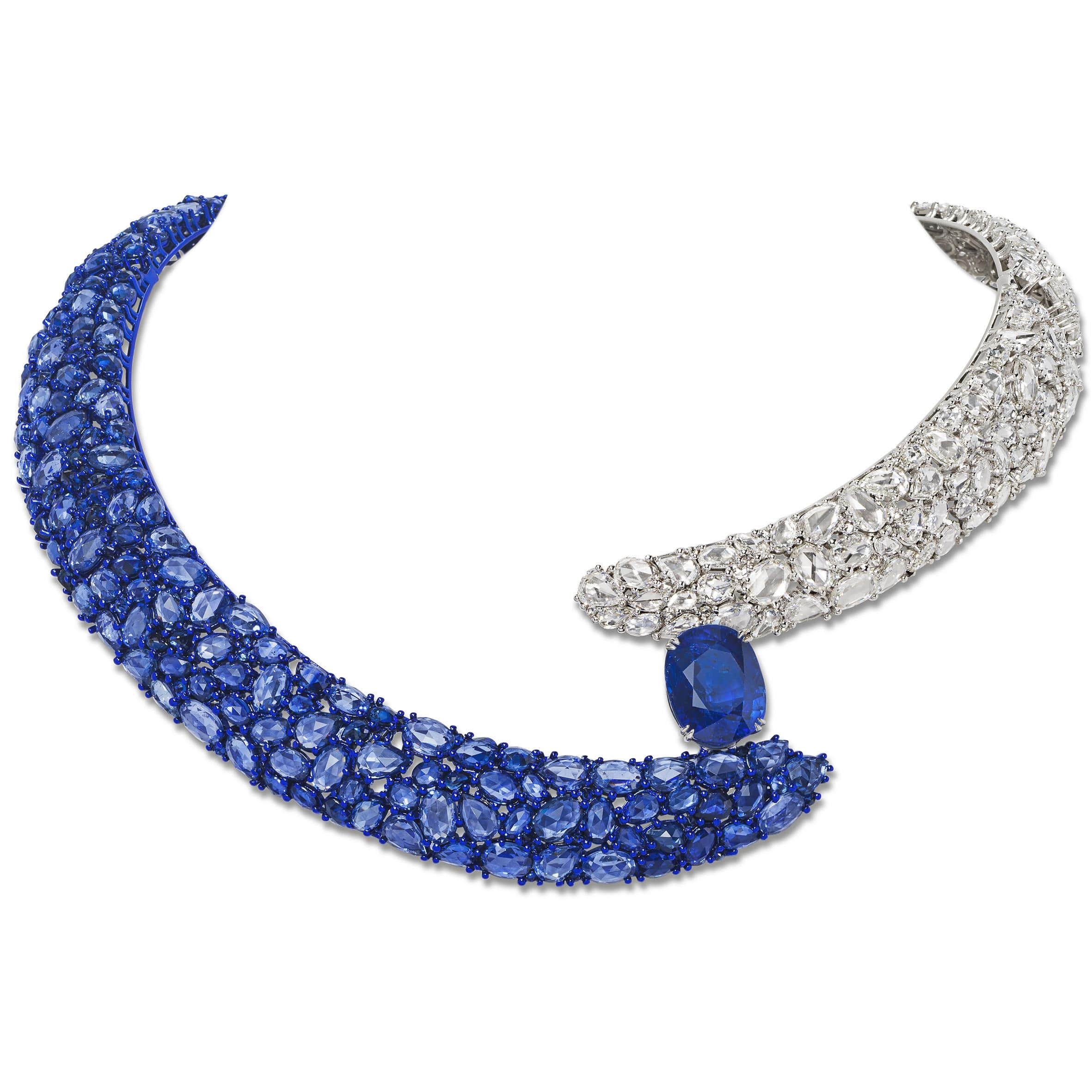
How Valuable are Sapphires?
The most exquisite sapphires combine an incredible depth of color, exceptional brilliance and high clarity. The most extraordinary sapphires are almost impossible to find today. Indeed, untreated gem-quality sapphires account for only one percent of the market.
Sapphires with the most treasured characteristics command record-breaking prices. In May 2005, an exceptional Kashmir blue sapphire sold for over 200,000 dollars per carat. More recently, a 109.08 carat Kashmir royal blue necklace sold for over 15 million dollars. This marked a world record for sapphire necklaces. Factors such as size, clarity, transparency, degree of treatment, and luster were all critical in determining the value of the jewel.
Undeniably, supreme quality sapphires grew in notoriety. In contrast to diamonds, untreated sapphires remain extremely uncommon and are growing rarer with time. As the real value of untreated stones was revealed, prices increased at a phenomenal rate. Today, we are receiving a growing number of knowledgeable gemstone collectors looking to diversify their wealth with a rare, one-of-a-kind sapphire.
Sapphire Treatments
Gem quality blue sapphires are very rare. Thus, treatments were introduced to make the weaker rough material more appealing.
A sapphire with imperfections is merely wounded. A treatment is a surgery that will enhance the charm of the gemstone and reveal its natural beauty. The most common operation is heating – or thermal treatment. In this procedure, heat is used to enhance a sapphire’s color, remove color zoning, and improve clarity. This approach does not alter the chemical composition of sapphires. This means they remain ‘natural’.
Buyers should know if a sapphire received any such treatment before purchasing a sapphire. We provide a gemological report from reputable laboratories with our larger sapphires. These reports clarify the nature and extent of any treatment.
Creating Luxurious Sapphire Jewellery
Only an expect cutter can unveil the full extent of a rough sapphire’s natural beauty. It takes a skilled gemstone cutter to bring out the captivating visual charm of the gemstone.
Our master gemstone cutters delicately polish the rough material into a variety of beautiful shapes. As with any gemstone, the cutter must abide by the rough material. By studying the unpolished gem carefully, the cutter will know whether it will yield a beautiful cabochon oval, rectangular, or round shapes.
With the polished sapphires at our disposal, we set about creating the designs that will soon become our masterpieces. Our creative team paints the creations to ensure the artistic harmony of the jewel.
Our master craftsmen breathe life into the jewel, crafting the settings that will cradle the gems.
The lucid blue of sapphires marries delicately with a variety of precious gemstones. Vibrant emeralds and yellow diamonds enhance the vivid blue of the sapphire. Whereas, white diamonds effortlessly complement their striking blue shade. We thrive on the infinite opportunities we have to create one-of-a-kind designs with these wonderous gemstones.
Sapphire Engagement Rings
A beautiful sapphire can be the perfect centerpiece for individuals seeking a distinctive engagement ring. Sapphires come in a variance of shades; no two sapphires are identical. This ensures your ring is as unique as your love story.
The sapphire gemstone is durable, and its rich color does not fade, making it perfect for daily wear. Sapphires are also a formidable store of value. Indeed, given their rarity, blue sapphires with a pure blue color experienced a significant appreciation in price. Gem-quality sapphires with coveted characteristics are rare. These gemstones will tend to increase in value over time.
Commemorate finding your better half with a marvelous sapphire ring by booking an appointment with one of our experts.
